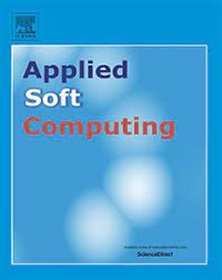Forecasting realized volatility using deep learning quantile function
IF 7.2
1区 计算机科学
Q1 COMPUTER SCIENCE, ARTIFICIAL INTELLIGENCE
引用次数: 0
Abstract
The accurate prediction of realized volatility is an essential component of effective investment strategies. Existing studies have often focused on modeling selective features of intraday return series, overlooking the comprehensive information embedded within them due to challenges such as microstructure noise and the complexity of handling numerous data points. To address these limitations, this paper proposes a novel deep learning quantile function (DLQF) framework that directly leverages intraday return series to forecast realized volatility. The proposed model integrates a Bi-LSTM network to capture the long memory of realized volatility and a quantile function implemented as a deep neural network to extract rich information from intraday returns. A loss function based on distance measures is defined to estimate the probabilistic distribution of intraday returns, enabling both intraday return prediction and realized volatility estimation. Empirical results demonstrate that DLQF outperforms traditional benchmarks across major ETFs, including SPY, DIA, and QQQ, which represent the S&P 500, Dow Jones Industrial Average, and Nasdaq 100, respectively. This model offers significant potential for applications in portfolio optimization, option pricing, and risk management.

求助全文
约1分钟内获得全文
求助全文
来源期刊

Applied Soft Computing
工程技术-计算机:跨学科应用
CiteScore
15.80
自引率
6.90%
发文量
874
审稿时长
10.9 months
期刊介绍:
Applied Soft Computing is an international journal promoting an integrated view of soft computing to solve real life problems.The focus is to publish the highest quality research in application and convergence of the areas of Fuzzy Logic, Neural Networks, Evolutionary Computing, Rough Sets and other similar techniques to address real world complexities.
Applied Soft Computing is a rolling publication: articles are published as soon as the editor-in-chief has accepted them. Therefore, the web site will continuously be updated with new articles and the publication time will be short.
 求助内容:
求助内容: 应助结果提醒方式:
应助结果提醒方式:


